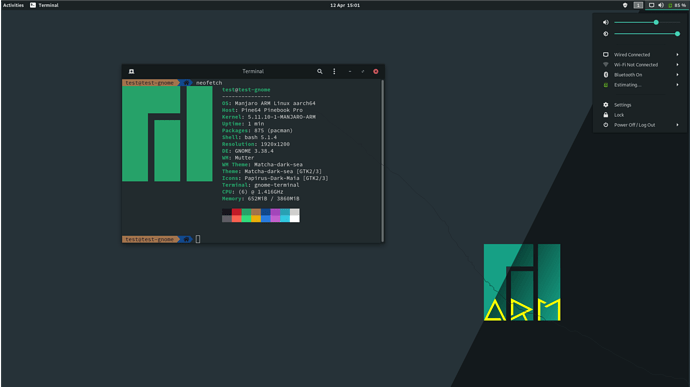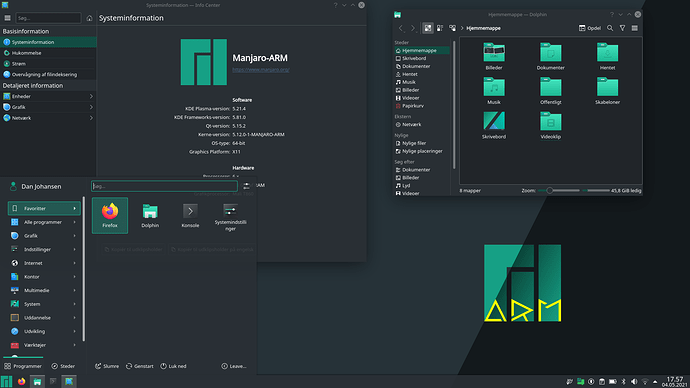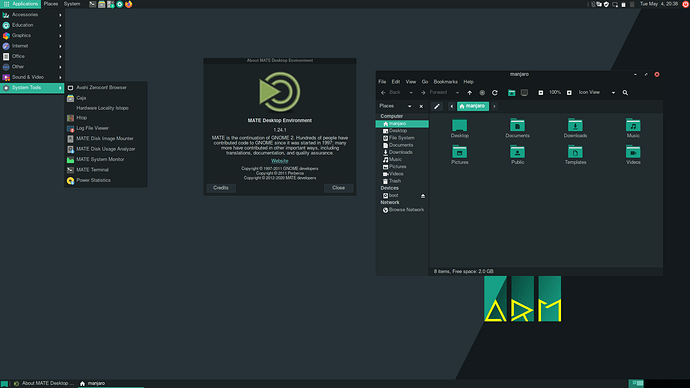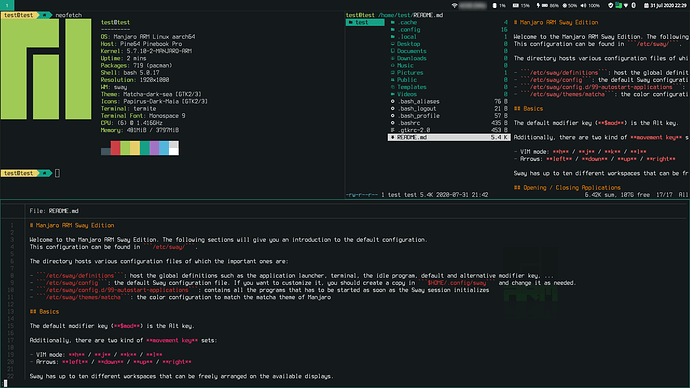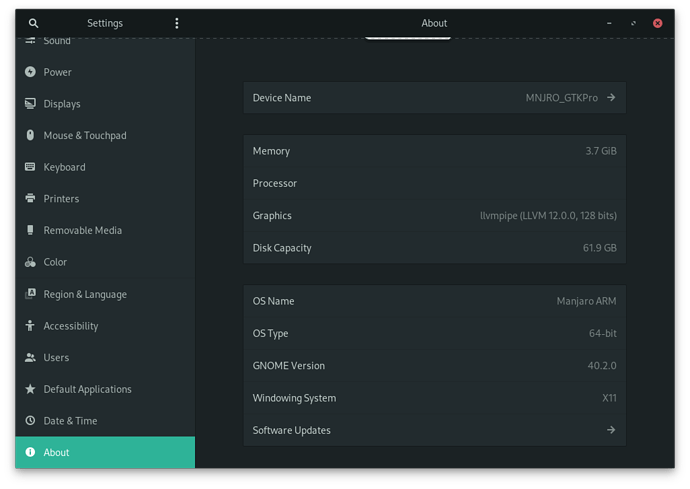Manjaro ARM 21.06 released!
We are proud to announce the release of Manjaro ARM 21.06, which will soon be available via manjaro.org.
This time we increased the amount of devices we do images for. You can find them all on manjaro.org.
We also welcome 2 new official editions to the fold. Gnome and Sway editions.
Manjaro ARM is proud to be the default installation on the Pinebook Pro from Pine64.
We have put in a lot of work to get to this point and we are excited that we have been accepted by the creators of this laptop, as a great OS option.
Pine64 also recently announced that Manjaro ARM with Plasma Mobile is going to be the stock OS on the retail PinePhones going forward. What an honor!
Manjaro ARM Gnome edition!
New application for flashing images
We have been working on a new GUI app to make it easy for users to flash a Manjaro ARM image on to an SD card or eMMC card.
Ifyou are on Manjaro ARM, simply install manjaro-arm-flasher and launch the app “Manjaro ARM Flasher” from your menu. This will download and flash the image of your choice.
You can also manually run the application (if you are not running Manjaro ARM) by downloading this python script, make it executable with chmod +x manjaro-arm-flasher and then run it with sudo ./manjaro-arm-flasher. It requires python-blkinfo 0.1.3 to be installed, which can be installed with pip install blkinfo.
First Time setup
This release sports the First Time setup for all images, also via SSH. This means that at first boot, you will be asked about the following:
- keyboard layout (except on pinebook, that is fixed to us layout)
- username
- additional user groups (optional)
- full name
- password for that username
- password for root
- timezone
- locale
- hostname
Then the setup script will set these settings and reboot to the login screen.
Screenshots
XFCE
KDE Plasma
MATE
Sway
Downloads:
All the download links can be found on the website
Torrents are also available!
Features:
- New packages from upstream and Manjaro ARM.
- XFCE 4.16
- KDE Plasma 5.22
- Gnome 40.2
- MATE 1.24
- Sway 1.6
- Most edition are now using Pipewire by default
- Pacman 6.0
Updating from 21.04:
- Most editions switched to Pipewire. To switch to Pipewire install
pipewire-pulseandpipewire-alsaand reboot.
Known issues:
- No audio cards on Roc-CC.
Tips and Tricks:
Smoothness on Raspberry Pi 3 devices:
To get a smoother experience on your Raspberry Pi 3 device, while running the Raspberry Pi 4 image do this:
- Install
xf86-video-fbturbo-git. - Edit
/boot/config.txtand comment outdtoverlay=vc4-fkms-v3dandmax_framebuffers=2. - Save the file and reboot.
Supported Devices:
Images:
- Khadas Vim 2 (maintained by @spikerguy)
- Khadas Vim 3 (maintained by @spikerguy)
- Odroid C4
- Odroid N2
- Odroid N2+
- Pine64-LTS
- Pine-H64
- Pinebook
- Pinebook Pro
- Raspberry Pi 4 (tested on Model B, Raspberry Pi 3 and Raspberry Pi 400) (maintained by @darksky)
- Rock64
- Rock Pi 4B
- Rock Pi 4C (maintained by @spikerguy)
- RockPro64
With Manjaro ARM Installer (in addition to the above devices): (Download it here)
- Khadas Vim 1
- Khadas Edge-V Pro
- LibreComputer ROC-RK3328-CC
- NanoPC T4
- Odroid C2
- Pine64+
What about other devices?
While we do make images for a lot of devices, we won’t be making images for all the supported devices. If your desired image for your desired supported device does not exist, please use manjaro-arm-installer to install it to an SD/eMMC card.
Donation
Please consider supporting Manjaro ARM directly via Patreon, Ko-Fi or Open Collective.
You can also donate to our upstream, which is Arch Linux ARM.
